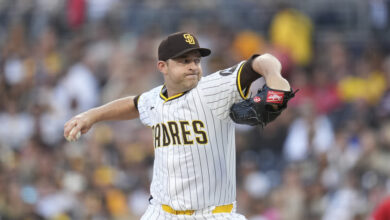
Walk and Roll All Night: Cubs Offense Driven by Drastically Improved Approach
If you walk more and strike out less, chances are you’re going to have a better offense.
It’s no secret that the Cubs have placed great emphasis on guys who can make contact and get on base. That’s why they targeted Jesse Rogers’ man-crush, Tommy “3 AM” La Stella, last season. It was a big part of why they replaced Starlin Castro with Ben Zobrist and paid big money to Jason Heyward this past offseason. Coupled with the maturation of the team’s youthful core, this offensive philosophy has begun paying huge dividends this season.
We began to see a change in overall approach in 2015 when the Cubs drew 567 walks, second only to the Blue Jays (570). That patience, however, was offset a bit by an aggressiveness that led to a league-high (and 3rd highest of all time) 1,518 strikeouts. That breaks out to 9.37 K’s per game, or approximately one-third of their outs in any given game. So, yeah, that’s bad.
Much has been made of the Cubs’ ability to run up opposing pitch counts and draw walks, but the drop in strikeouts has been just as noticeable. Let’s take a look at this quick comparison between last year and this and see if anything jumps off the page.
If my math is correct, that’s 277 more baserunners and 251 fewer K’s. What’s the big deal though, you might be asking, an out is an out and they’ve still got 27 of them in a game. True, but only in rare instances does a strikeout result in a runner reaching base or advancing. So it stands to reason that making more outs via contact will increase your odds of scoring runs.
And that, my friends, is where the Cubs have really improved this season. Inherent in those reduced strikeout numbers are noticeable changes in both swinging-strike rate (lower) and contact rate (higher). In 2015, the Cubs’ 11.8 and 74.7 percent rates in those respective categories were MLB’s worst. So far this season, however, they’re up to 9.6 (10th) and 77.9 percent (19th). This despite seeing fewer pitches in the zone (45.9 percent) than all but five other teams.
The Cubs saw even fewer strikes (43 percent, 29th in MLB) last season, but that was due in large part to their free-swinging tendencies (47 percent swing rate, 15th in MLB). They’re now swinging at only 43.8 percent of the pitches they see, less than all but four teams. Long story short, the Cubs are being more selective and they’re making more contact when they do choose to swing. The results are pretty evident.
After scoring 689 runs (4.25/game) and putting up a +81 run differential in 2015, the Cubs are on pace to tally 962 runs (5.94/game) this season and already have a run differential of +99. While those numbers will surely fluctuate as the year moves along, the approach that drives them will remain solid.
When you distill all these numbers, you’re left with a pretty basic concept: see ball, hit ball. Well, no, that’s not really it. More like: see ball and then then make the right decision as to whether you should hit ball or take ball for a ball and walk. Unless, of course, Country Joe West is behind the plate, in which case you don’t really know what the call will be. But mostly the first thing.
If all goes well, this “keep it simple, stupid” method could have them partying every day and kissing a shiny trophy in a few months.


